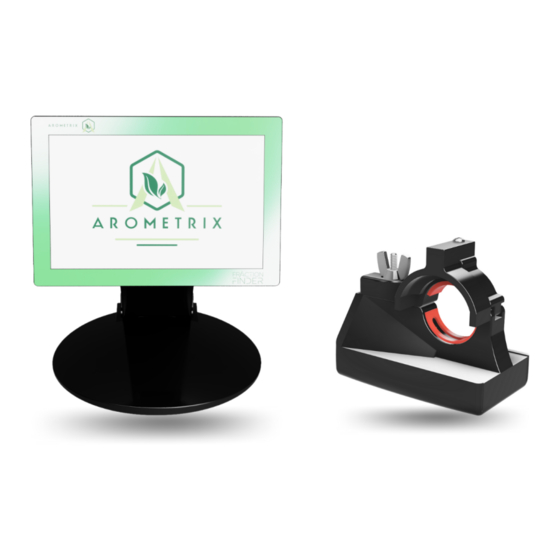Arometrix FRACTION FINDER Manuale d'uso - Pagina 12
Sfoglia online o scarica il pdf Manuale d'uso per Apparecchiature di laboratorio Arometrix FRACTION FINDER. Arometrix FRACTION FINDER 17.

Step 6) Identify Transition from Main Body to Tails
1) After 20 minutes from the flask transfer from Heads to the Main Body, the signal will become more
stable
2) Check the Wavelength View
3) A sharp increase of the signal at the beginning will likely be shown, followed by a sharp drop-off of
the signal to a stable moderate level
a. This initial increase is very concreted Main Body initially coming through the system as well
as any oxidized/degraded fluid that may have been generated during the vacuum release
while performing a flask transfer
4) This signal will likely stay constant for the next 1 – 1.5 hours, then will slowly start to raise. An
example plot is shown below.
5) The constant increase or significant increase of signal at this point indicates that the distillation
may be entering Tails, but the signal also could vary slightly with:
a. Significant changes in vacuum pressure
b. Significant changes in flow rate
c. Background light gets brighter
6) If a raise is observed that does not seem to track with the three outlined changes above, the
distillation has entered Tails
For the Main Body to Tails Transition, there are two separate methods for identifying this:
Option A - Spectrum View: This view will show that there is a peak shift to the right, with the peak
centered at around 490-510nm. An example plot is shown below. Note: Our "Degradates" indicator is
equivalent to the Tails fraction. Refer to our Chemical Cheat Sheet for more information on this.
Option B - Wavelength View: This view will show that there is a sharp increase in the value of the
wavelength plot. An example plot is shown below. This view is recommended for this change, as well.
Arometrix, Inc.
arometrix.com/resources
12
